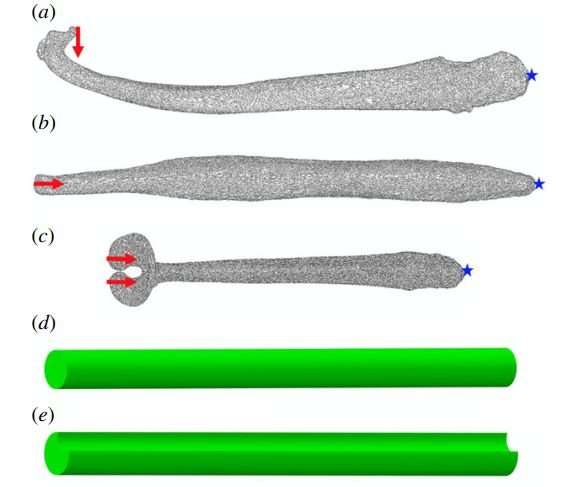September 19, 2018 report
Why some animals still have a penis bone

A team of researchers affiliated with several institutions in the U.K. has found a possible explanation for why some animals still have a penis bone—"prolonged intromission." In their paper published in Proceedings of the Royal Society B, the group describes their work studying the penis bone in a wide variety of animals and what the found.
The penis bone, known more technically as the baculum, is a bone that resides in the abdomen of some animals. It is moved by muscles into the shaft of the penis when the animal is aroused. Interestingly, most animals have a baculum—and all primates have one, with the exception of humans. The question of why some animals have a baculum and some do not has baffled scientists for years. Some early research suggested it might be needed when animals have a mismatch in size between the genders—maneuvering a large penis into a small vagina, for example. But not everyone agreed with that assessment. In this new effort, the researchers conducted an extensive study of the baculum to see if they could find the answer once and for all.
The researchers studied 3-D scans of hundreds of baculum samples from a host of species, obtained from several museums. The 3-D scans were then used to create 3-D models, which were then subjected to virtual copulation. The goal was to better understand the stresses on the penis during mating.
The researchers report finding a trend—the longer an animal copulates, the more robust its baculum. They note that some species remain joined for hours—one for as long as three hours. They theorize that animals with a baculum have retained them to protect the penis during such lengthy encounters—specifically to protect the urethra, to make sure the sperm can make its way to the intended target. They note that animals that copulate for short periods of time, such as humans, do not need such protection. A recent study published in the Journal of Sex Medicine found that internationally, the average length of human copulation is a mere 5.4 minutes.
More information: Charlotte A. Brassey et al. Testing hypotheses for the function of the carnivoran baculum using finite-element analysis, Proceedings of the Royal Society B: Biological Sciences (2018). DOI: 10.1098/rspb.2018.1473
Journal information: Proceedings of the Royal Society B
© 2018 Phys.org





















